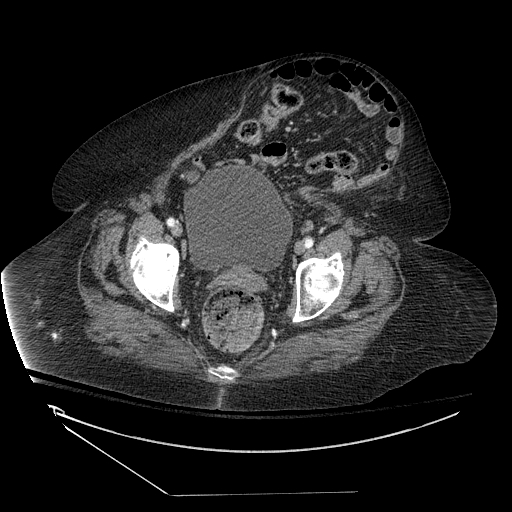[1]
Yagnik VD, Joshipura V. Non-incisional traumatic lateral abdominal wall hernia. ANZ journal of surgery. 2017 Nov:87(11):952-953. doi: 10.1111/ans.14052. Epub
[PubMed PMID: 29098778]
[2]
Berrevoet F. Prevention of Incisional Hernias after Open Abdomen Treatment. Frontiers in surgery. 2018:5():11. doi: 10.3389/fsurg.2018.00011. Epub 2018 Feb 26
[PubMed PMID: 29536013]
[3]
Kaneko T,Funahashi K,Ushigome M,Kagami S,Goto M,Koda T,Nagashima Y,Shiokawa H,Koike J, Incidence of and risk factors for incisional hernia after closure of temporary ileostomy for colorectal malignancy. Hernia : the journal of hernias and abdominal wall surgery. 2018 Nov 13
[PubMed PMID: 30426253]
[4]
Doussot A, Abo-Alhassan F, Derbal S, Fournel I, Kasereka-Kisenge F, Codjia T, Khalil H, Dubuisson V, Najah H, Laurent A, Romain B, Barrat C, Trésallet C, Mathonnet M, Ortega-Deballon P. Indications and Outcomes of a Cross-Linked Porcine Dermal Collagen Mesh (Permacol) for Complex Abdominal Wall Reconstruction: A Multicenter Audit. World journal of surgery. 2019 Mar:43(3):791-797. doi: 10.1007/s00268-018-4853-x. Epub
[PubMed PMID: 30426186]
[5]
Blatnik JA, Michael Brunt L. Controversies and Techniques in the Repair of Abdominal Wall Hernias. Journal of gastrointestinal surgery : official journal of the Society for Surgery of the Alimentary Tract. 2019 Apr:23(4):837-845. doi: 10.1007/s11605-018-3989-1. Epub 2018 Oct 18
[PubMed PMID: 30338444]
[6]
Krivan MS, Giorga A, Barreca M, Jain VK, Al-Taan OS. Concomitant ventral hernia repair and bariatric surgery: a retrospective analysis from a UK-based bariatric center. Surgical endoscopy. 2019 Mar:33(3):705-710. doi: 10.1007/s00464-018-6492-6. Epub 2018 Oct 19
[PubMed PMID: 30341658]
Level 2 (mid-level) evidence
[7]
Dai W, Chen Z, Zuo J, Tan J, Tan M, Yuan Y. Risk factors of postoperative complications after emergency repair of incarcerated groin hernia for adult patients: a retrospective cohort study. Hernia : the journal of hernias and abdominal wall surgery. 2019 Apr:23(2):267-276. doi: 10.1007/s10029-018-1854-5. Epub 2018 Nov 12
[PubMed PMID: 30421299]
Level 2 (mid-level) evidence
[8]
Tubre DJ, Schroeder AD, Estes J, Eisenga J, Fitzgibbons RJ Jr. Surgical site infection: the "Achilles Heel" of all types of abdominal wall hernia reconstruction. Hernia : the journal of hernias and abdominal wall surgery. 2018 Dec:22(6):1003-1013. doi: 10.1007/s10029-018-1826-9. Epub 2018 Oct 1
[PubMed PMID: 30276561]
[9]
Zucker BE, Simillis C, Tekkis P, Kontovounisios C. Suture choice to reduce occurrence of surgical site infection, hernia, wound dehiscence and sinus/fistula: a network meta-analysis. Annals of the Royal College of Surgeons of England. 2019 Mar:101(3):150-161. doi: 10.1308/rcsann.2018.0170. Epub 2018 Oct 5
[PubMed PMID: 30286645]
Level 1 (high-level) evidence
[10]
Söderbäck H, Gunnarsson U, Hellman P, Sandblom G. Incisional hernia after surgery for colorectal cancer: a population-based register study. International journal of colorectal disease. 2018 Oct:33(10):1411-1417. doi: 10.1007/s00384-018-3124-5. Epub 2018 Jul 17
[PubMed PMID: 30019246]
[11]
van den Hil LCL, Vogels RRM, van Barneveld KWY, Gijbels MJJ, Peutz-Kootstra CJ, Cleutjens JPM, Schreinemacher MHF, Bouvy ND. Comparability of histological outcomes in rats and humans in a hernia model. The Journal of surgical research. 2018 Sep:229():271-276. doi: 10.1016/j.jss.2018.03.019. Epub 2018 May 5
[PubMed PMID: 29937000]
[12]
Belokonev VI, Pushkin SIu, Fedorina TA, Nagapetian SV. [A biomechanical concept of the pathogenesis of postoperative ventral hernias]. Vestnik khirurgii imeni I. I. Grekova. 2000:159(5):23-7
[PubMed PMID: 11188811]
[13]
Cherla DV, Bernardi K, Blair KJ, Chua SS, Hasapes JP, Kao LS, Ko TC, Matta EJ, Moses ML, Shiralkar KG, Surabhi VR, Tammisetti VS, Viso CP, Liang MK. Importance of the physical exam: double-blind randomized controlled trial of radiologic interpretation of ventral hernias after selective clinical information. Hernia : the journal of hernias and abdominal wall surgery. 2019 Oct:23(5):987-994. doi: 10.1007/s10029-018-1856-3. Epub 2018 Nov 14
[PubMed PMID: 30430273]
Level 1 (high-level) evidence
[14]
Halligan S, Parker SG, Plumb AA, Windsor ACJ. Imaging complex ventral hernias, their surgical repair, and their complications. European radiology. 2018 Aug:28(8):3560-3569. doi: 10.1007/s00330-018-5328-z. Epub 2018 Mar 12
[PubMed PMID: 29532239]
[15]
Farukhi MA, Mattingly MS, Clapp B, Tyroch AH. CT Scan Reliability in Detecting Internal Hernia after Gastric Bypass. JSLS : Journal of the Society of Laparoendoscopic Surgeons. 2017 Oct-Dec:21(4):. doi: 10.4293/JSLS.2017.00054. Epub
[PubMed PMID: 29279662]
[16]
Holihan JL, Karanjawala B, Ko A, Askenasy EP, Matta EJ, Gharbaoui L, Hasapes JP, Tammisetti VS, Thupili CR, Alawadi ZM, Bondre I, Flores-Gonzalez JR, Kao LS, Liang MK. Use of Computed Tomography in Diagnosing Ventral Hernia Recurrence: A Blinded, Prospective, Multispecialty Evaluation. JAMA surgery. 2016 Jan:151(1):7-13. doi: 10.1001/jamasurg.2015.2580. Epub
[PubMed PMID: 26398884]
[17]
Khorgami Z, Hui BY, Mushtaq N, Chow GS, Sclabas GM. Predictors of mortality after elective ventral hernia repair: an analysis of national inpatient sample. Hernia : the journal of hernias and abdominal wall surgery. 2019 Oct:23(5):979-985. doi: 10.1007/s10029-018-1841-x. Epub 2018 Nov 3
[PubMed PMID: 30392164]
[18]
de Vries HS, Smeeing D, Lourens H, Kruyt PM, Mollen RMHG. Long-term clinical experience with laparoscopic ventral hernia repair using a ParietexTM composite mesh in severely obese and non-severe obese patients: a single center cohort study. Minimally invasive therapy & allied technologies : MITAT : official journal of the Society for Minimally Invasive Therapy. 2019 Oct:28(5):304-308. doi: 10.1080/13645706.2018.1521431. Epub 2018 Oct 11
[PubMed PMID: 30307356]
[19]
Köckerling F, Lammers B. Open Intraperitoneal Onlay Mesh (IPOM) Technique for Incisional Hernia Repair. Frontiers in surgery. 2018:5():66. doi: 10.3389/fsurg.2018.00066. Epub 2018 Oct 23
[PubMed PMID: 30406110]
[20]
Azin A, Hirpara D, Jackson T, Okrainec A, Elnahas A, Chadi SA, Quereshy FA. Emergency laparoscopic and open repair of incarcerated ventral hernias: a multi-institutional comparative analysis with coarsened exact matching. Surgical endoscopy. 2019 Sep:33(9):2812-2820. doi: 10.1007/s00464-018-6573-6. Epub 2018 Nov 12
[PubMed PMID: 30421078]
Level 2 (mid-level) evidence
[21]
Petersson J, Koedam TW, Bonjer HJ, Andersson J, Angenete E, Bock D, Cuesta MA, Deijen CL, Fürst A, Lacy AM, Rosenberg J, Haglind E, COlorectal cancer Laparoscopic or Open Resection (COLOR) II Study Group. Bowel Obstruction and Ventral Hernia After Laparoscopic Versus Open Surgery for Rectal Cancer in A Randomized Trial (COLOR II). Annals of surgery. 2019 Jan:269(1):53-57. doi: 10.1097/SLA.0000000000002790. Epub
[PubMed PMID: 29746337]
Level 1 (high-level) evidence

